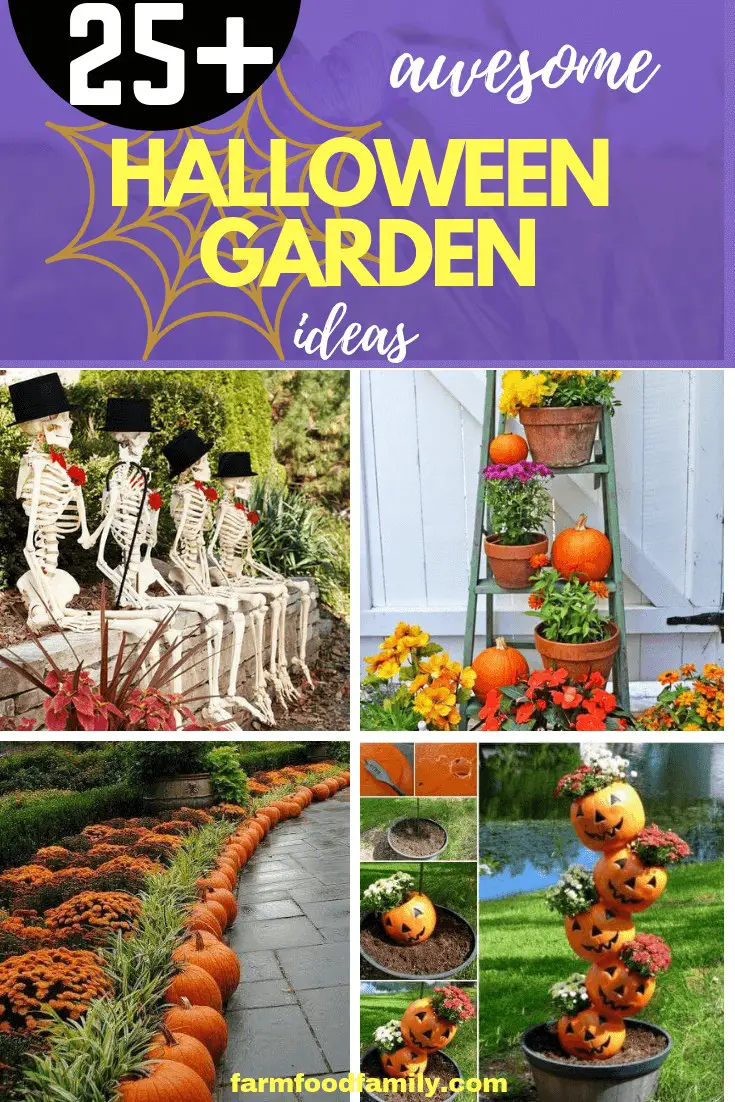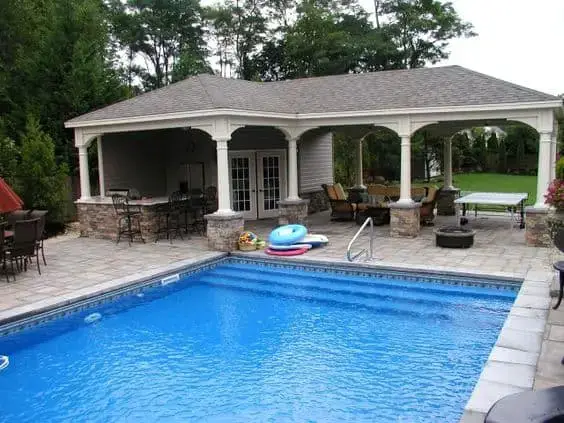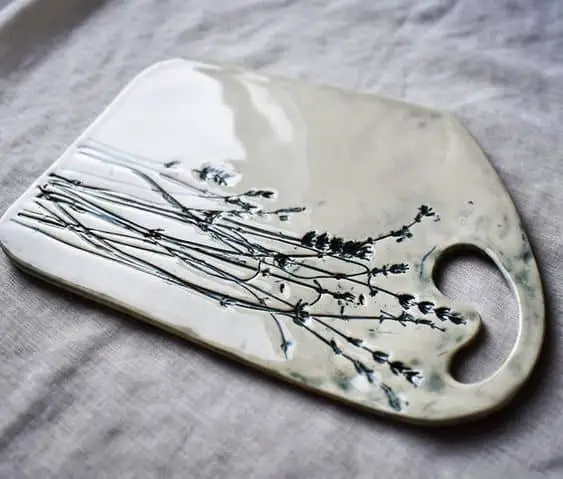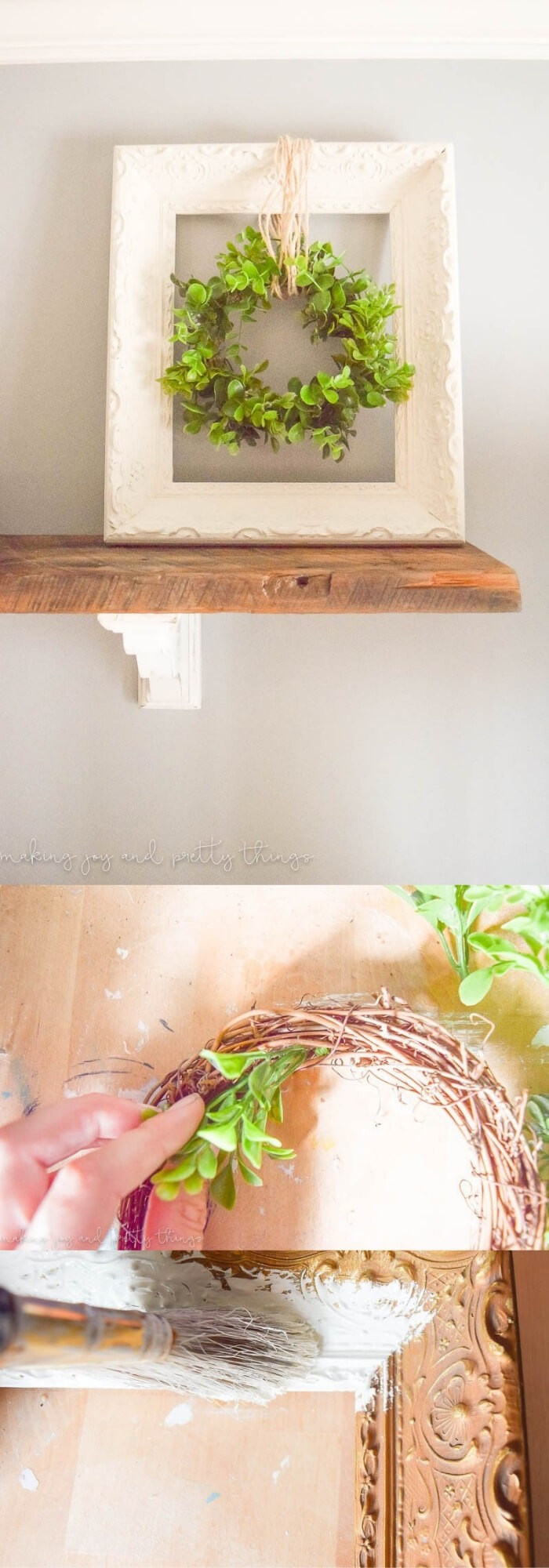30+ Inexpensive Dog Fence Ideas For Your Backyard
When it comes to caring for our canine companions, one crucial aspect is ensuring their safety and containment. Dogs are notorious for their boundless energy and enthusiasm, making it essential to keep them in check when we need to attend to small tasks or ensure they don’t slip away and get lost. A reliable dog fence becomes a vital tool in achieving this goal, whether you’re looking for a permanent solution or something portable and temporary.
In this article, we’ll delve into various dog fence ideas that cater to different needs and preferences, from invisible fences to pallet fencing, metal fencing, and more.
Types of fences for dogs
While it’s true that not all dog fences are created equal, there is a diverse range of options available to suit your furry friend’s unique needs and lifestyle. For instance, some breeds may require specific fencing solutions due to their size, energy level, or natural instincts. On the other hand, you might be looking for a fence that can easily be moved around indoors or taken on-the-go for outdoor adventures.
Whatever your requirements, there’s a suitable dog fence out there waiting to be discovered.
Temporary dog fence ideas
For pet owners living in apartments or temporary rentals, investing in portable dog fences can provide peace of mind when hosting visitors or playdates with furry friends. Consider a medium to large-sized foldable fence that can be easily set up in the yard or living room, keeping your pets contained and safe while still allowing them to enjoy social interactions.
You may also want to consider freestanding wood panel fences, like those made from MDF, which can serve as barriers for doors and gates. These versatile fences often feature a central gate that allows for easy entry and exit, perfect for snacks or potty breaks. While designed for indoor use only, these sturdy fences can effectively keep your pets contained and secure.
Portable dog fence ideas
When it comes to taking your dog on outdoor adventures, having a portable fence that can keep up with their energy and enthusiasm is crucial. This type of fence allows you to unfold it in various settings, such as beaches, parks, or backyard gatherings. Typically made from durable materials like nylon, metal, or plastic, they’re designed to withstand the elements and provide a comfortable space for your furry friend.
For smaller breeds, consider the popup nylon playpen and fence, which is weatherproof and suitable for both indoor and outdoor use. Its compact design makes it easy to transport and set up, giving you peace of mind while your dog plays and explores. Another great option is the lightweight plastic portable fence/playpen, perfect for indoor or outdoor use. It comes with interchangeable panel kits, allowing you to create a customized enclosure that suits your needs.
This fence is particularly well-suited for more laid-back breeds and serves as an excellent barrier between your pets and valuable furniture.
Invisible dog fence ideas
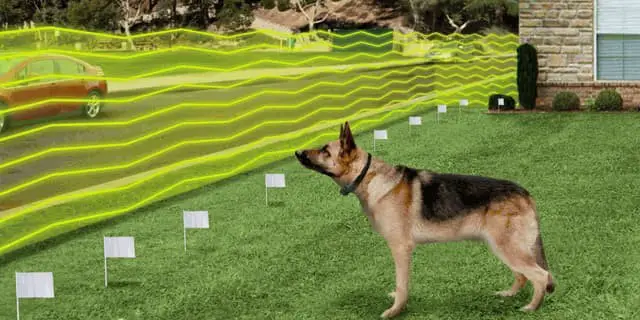
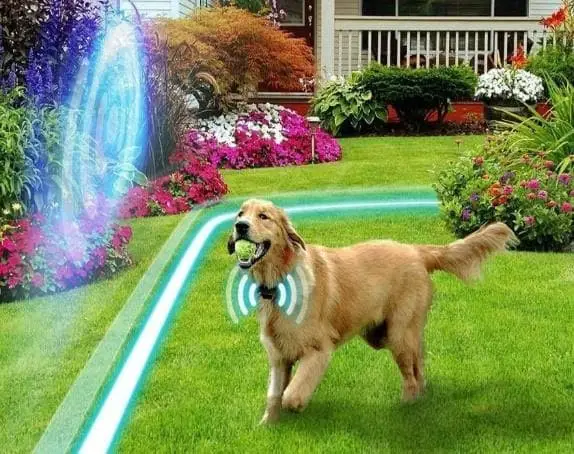
Invisible dog fences have gained popularity due to their ease of installation and effectiveness in keeping furry friends contained. Electric-powered, these fences are also known as electric dog fences. To ensure successful use, a dog must wear an electronic collar that emits a warning sound before reaching the perimeter. If the dog continues forward, it will receive a mild correction. It’s crucial to condition your dog on what happens when they approach the boundary.
There are various options available, including in-ground electric dog fences and underground installed electric dog fences. You can explore these options further by checking out reviews and ratings on Amazon.
Dog proof fencing ideas
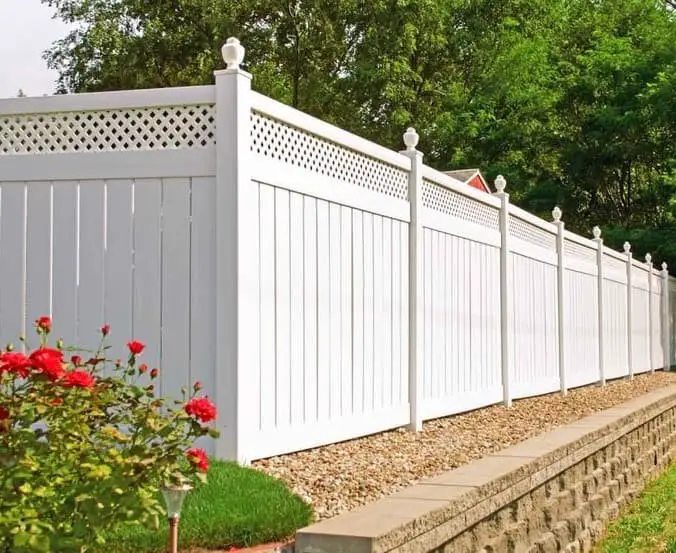
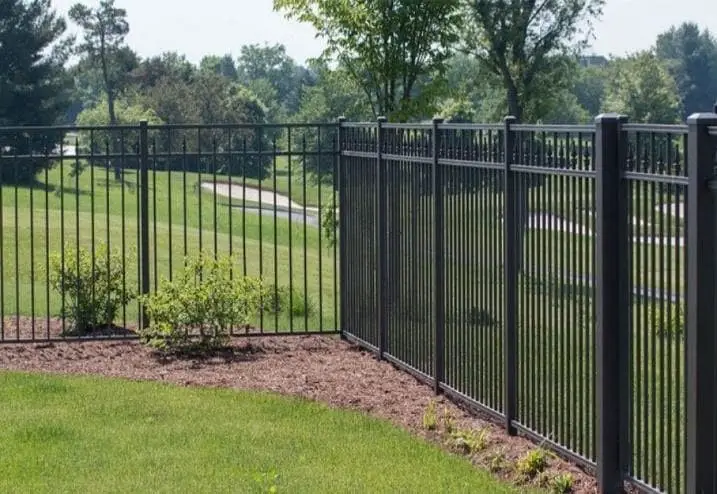
When it comes to managing active dogs that may trample or chase wildlife, dog-proof fencing is a must-have consideration. For instance, if your furry friends are prone to following other pups across the yard, a bottom-half privacy fence can be an excellent solution. Not only does it keep them contained, but it also allows for visual and auditory interactions between pets while preventing unwanted excursions.
Additionally, this type of fencing can enhance curb appeal with its sleek, blackout aesthetic and the incorporation of flowering plants along the top rail. Another effective dog-proofing option is corrugated metal fencing. As larger breeds are well-aware of their physical prowess, it’s essential to select a material that can withstand their strength. Corrugated metal fencing not only provides durability but also lends a contemporary, industrial charm to your yard’s perimeter.
Indoor dog fence ideas
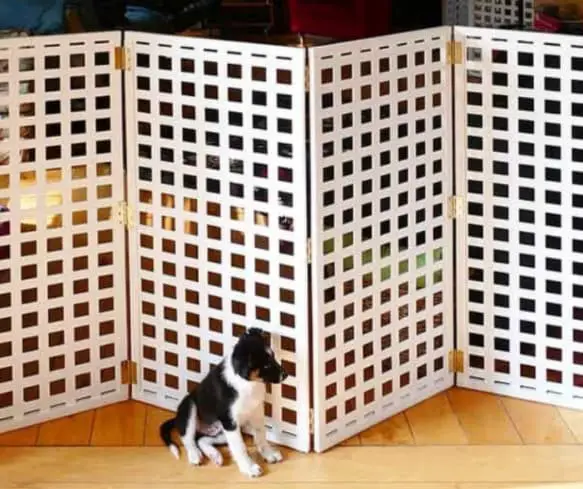
Indoor dog fences offer endless possibilities when it comes to design and functionality. With options ranging from nylon, wood, PVC, MDF, and metal, homeowners can choose the perfect material to suit their style and needs. At their core, these barriers serve as a means of restricting access to certain areas of the house for high-energy dogs and preventing them from navigating stairs.
For instance, a wooden lattice fence can be set up to create an instant playpen in a designated area, such as by the living room. To make it even more inviting, you can add a portable dog house to provide a comfortable space for your furry friend to lounge around. When shopping for an indoor dog fence, be sure to consider factors like height and sturdiness to ensure that it effectively contains your pet. One option is a retractable nylon barrier with metal poles.
This setup allows for easy opening and closing during playtime, making it perfect for active dogs who love to move around. The clean and minimalist design also makes it an attractive addition to any room, whether it’s placed by the stairs or in the kitchen.
Pallet fence ideas for dogs
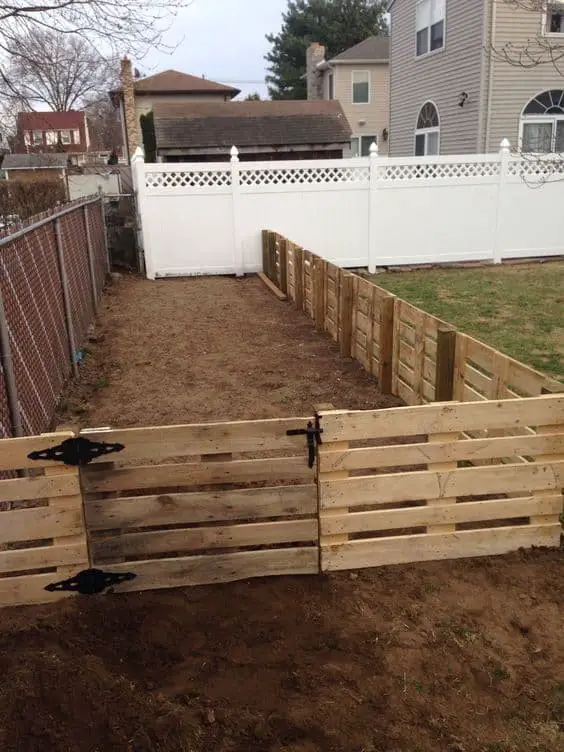
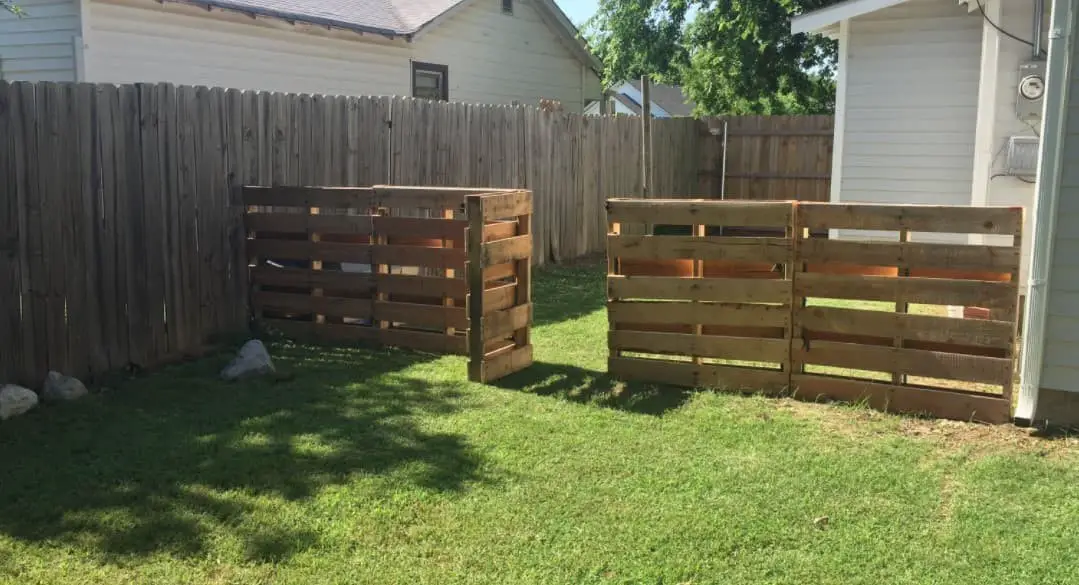
Wood fences are an eco-friendly option for pet owners, as they’re often made from repurposed materials. These versatile barriers can be customized to fit your space, whether you prefer a dense or airy design. You can even add a splash of color with a fresh coat of paint. By getting creative with pallet wood and deck screws, you can transform a small area into a charming farmhouse-style dog run and playpen for your furry friends.
For example, a simple barrier fence featuring just two pallet panels is easy to set up and can be opened to let the dogs have fun when it’s time to play.
Wood fence ideas for dogs
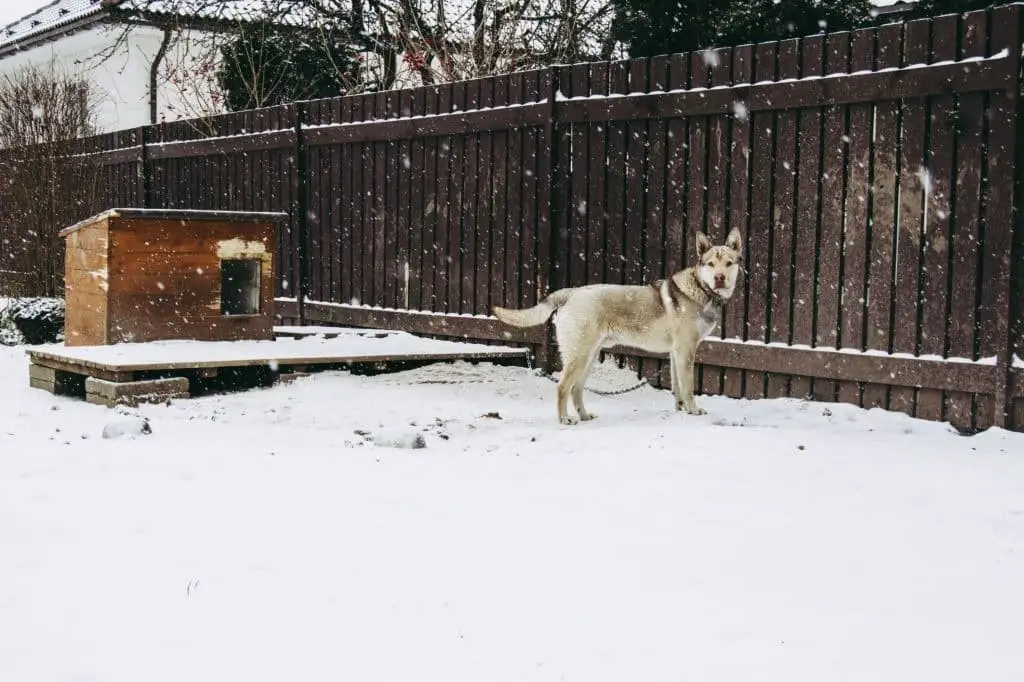
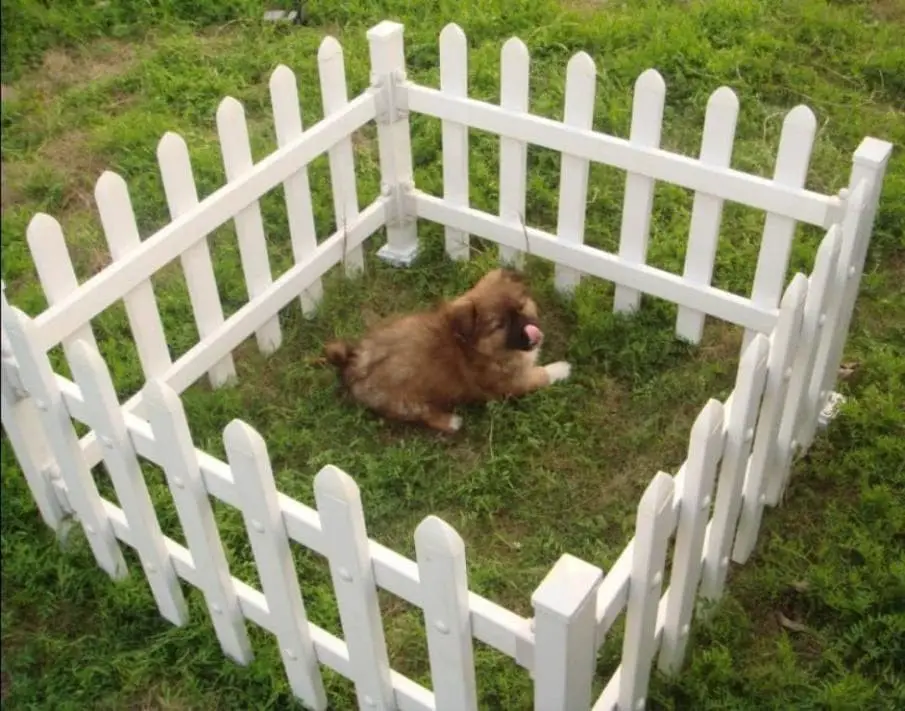
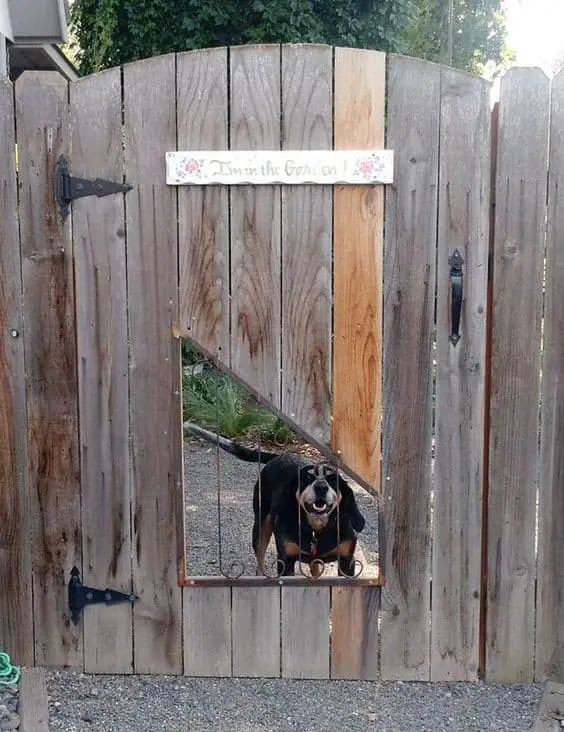
Wooden fences have a timeless allure that can elevate any yard’s aesthetic while serving as an effective deterrent for stray animals. This natural material is particularly well-suited for keeping furry friends safe from harm, whether it’s preventing them from bounding into oncoming traffic or containing larger breeds within a reliable perimeter.
Among the many wood dog fence ideas, the picket style made from durable hardwoods like cedar stands out as an excellent choice, offering a sturdy barrier that will withstand the test of time. For smaller breeds, consider building smaller wooden picket fences around focal points like trees, providing a cozy enclosure that keeps them contained and secure.
Alternatively, you could create a wooden patio fence with a metal hole for your dog to peek through, allowing them to stay enclosed while still enjoying the sights and sounds of their surroundings.
Dog run fence ideas
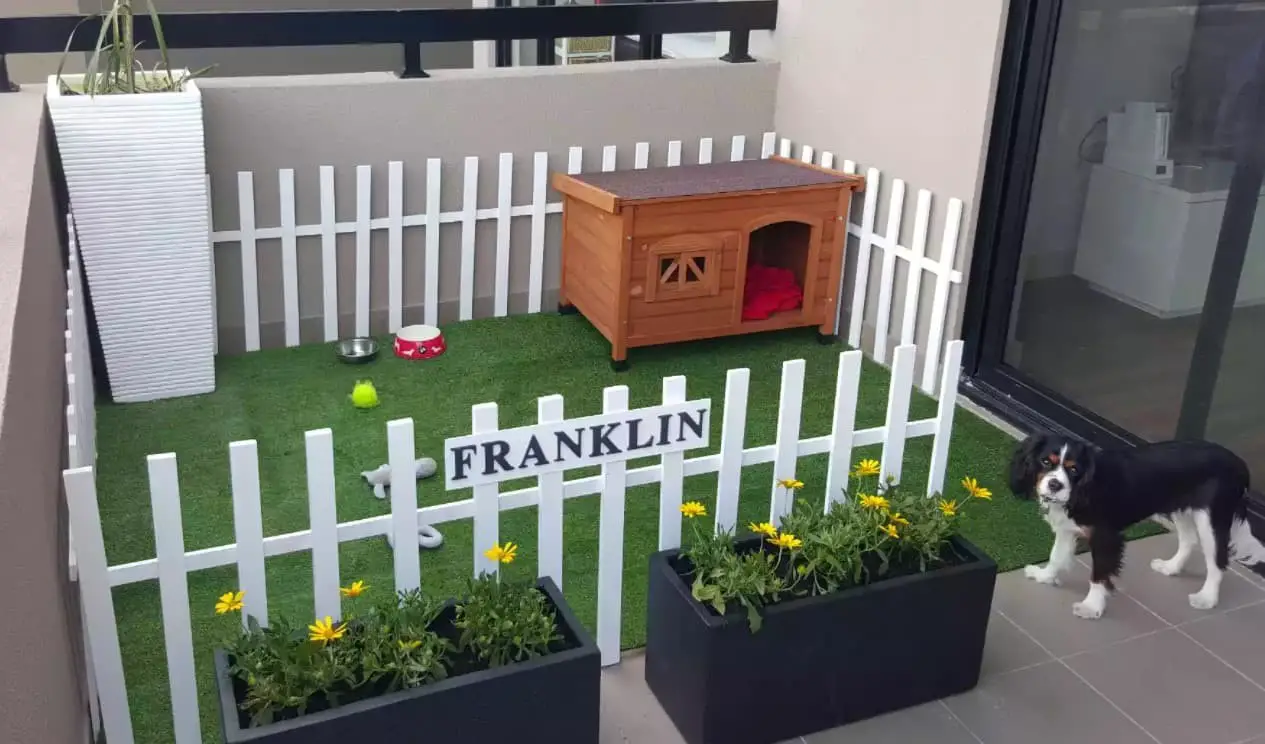
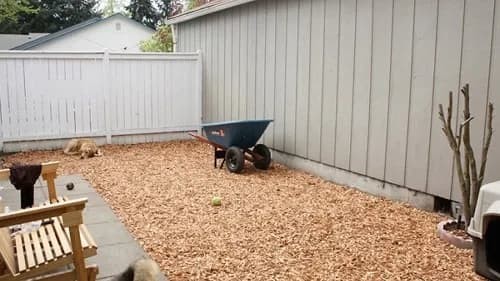
A dog run provides an ample space for your dogs to exercise freely with their companions, even when you’re away. The size of the area isn’t crucial as long as it’s spacious enough for the dogs to move around comfortably. You can create a compact and cozy dog run for a small apartment by using thin wooden panels, artificial grass for comfort, and a small doghouse where your pets can lounge. This setup is ideal for small and tame breeds that don’t require a lot of space.
Alternatively, you can opt for wood chips instead of artificial grass to create a cushioned surface for your furry friends. Not only does this provide comfort, but it also helps eliminate the smell of dog urine and keeps the area bacteria-free. Cedar wood chips are particularly beneficial as they act as a natural repellent against ticks and fleas.
Small dog fence ideas
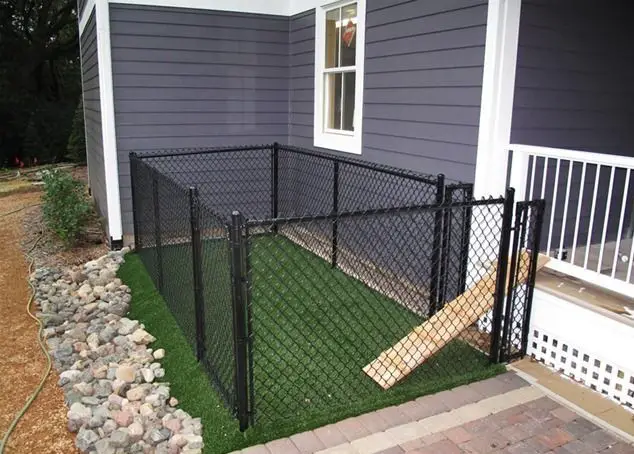
You don’t need expansive properties to keep your furry friends contained. In fact, compact dog fencing solutions can be just as effective in small spaces or designated dog runs. This versatility is particularly useful for those with limited outdoor areas or who prefer a more intimate setting. One such example is the corrugated metal panel fence featured on Amazon.
When set up on a patio, it serves as a reliable containment system, allowing homeowners to entertain guests without worrying about their pets making a break for it. And, as an added bonus, this affordable option is surprisingly sturdy considering its lightweight material. Another notable design is the compact corner dog fence situated near a porch.
Not only does it provide ample space for dogs to roam freely, but it also enables owners to keep a watchful eye on their pets while enjoying a leisurely afternoon tea. Moreover, this thoughtful design helps maintain a secure front door and prevents unwanted deposits of dog waste on the lawn.
Chain link fence ideas for dogs
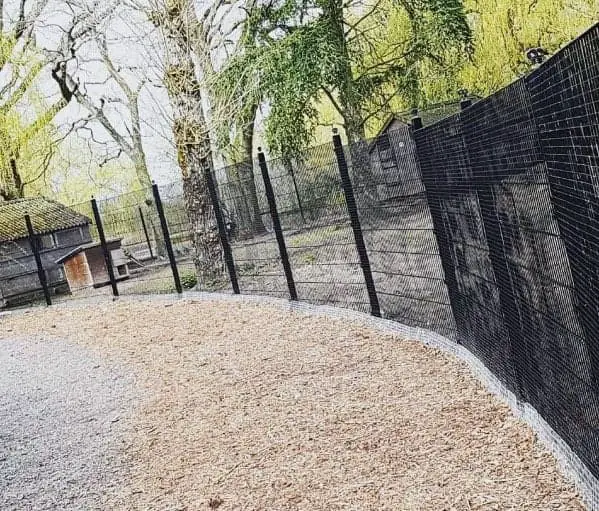
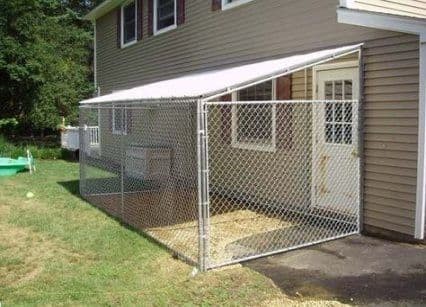
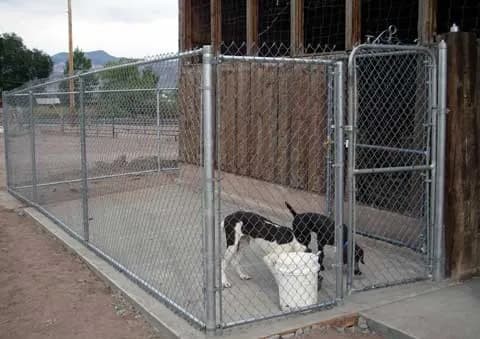
Chain link fencing is often regarded as an affordable solution for creating safe barrier enclosures for canine playpens, particularly those designed for outdoor use. This versatile material can be used to set up a perimeter fence around your home’s exterior, which is especially practical for urban or suburban settings where space may be limited.
When it comes to installing a durable enclosure for your dogs, chain link fencing stands out as a reliable and easy-to-install option.
The featured product boasts metal posts that provide the necessary support for active and large breeds. Not only does this setup keep your furry friends contained, but it also enables you to monitor their movements while allowing them to observe people and their surroundings.
Large dog fencing ideas
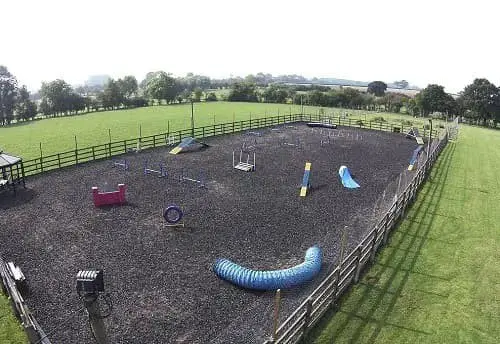
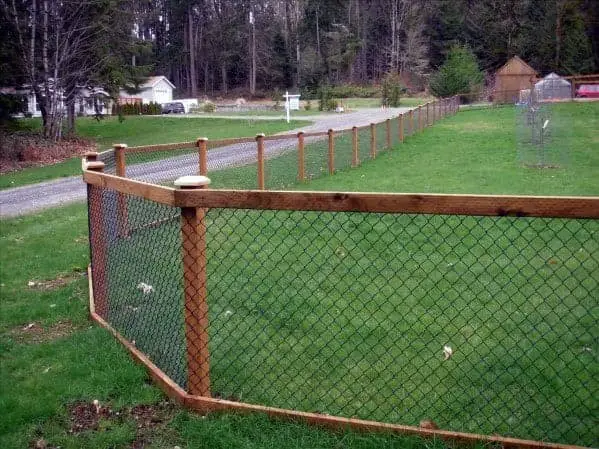
For dog owners with spacious yards, setting up perimeter fencing and dividing larger areas into smaller sections can be an effective way to create a secure and enjoyable space for canine companions. This approach not only keeps pets contained but also allows for the creation of a comprehensive dog training course using large fencing components. A budget-friendly option is to utilize irregularly sized wood pallets, which form the basis of a simple yet functional dog fence.
Adding gravel mulch and incorporating old tires into obstacle courses can provide hours of entertainment for dogs while keeping costs low. For a more durable and aesthetically pleasing solution, consider combining wood with industrial wire. This hybrid approach offers unparalleled durability, allowing owners to enjoy the freedom of having their dogs roam freely within the fenced area.
The open design also enables easy signaling by dogs to arriving visitors, making it an excellent choice for large yards.
Metal dog fence ideas
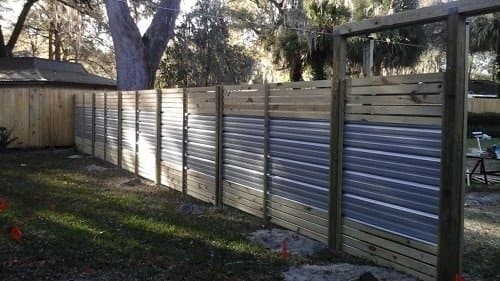
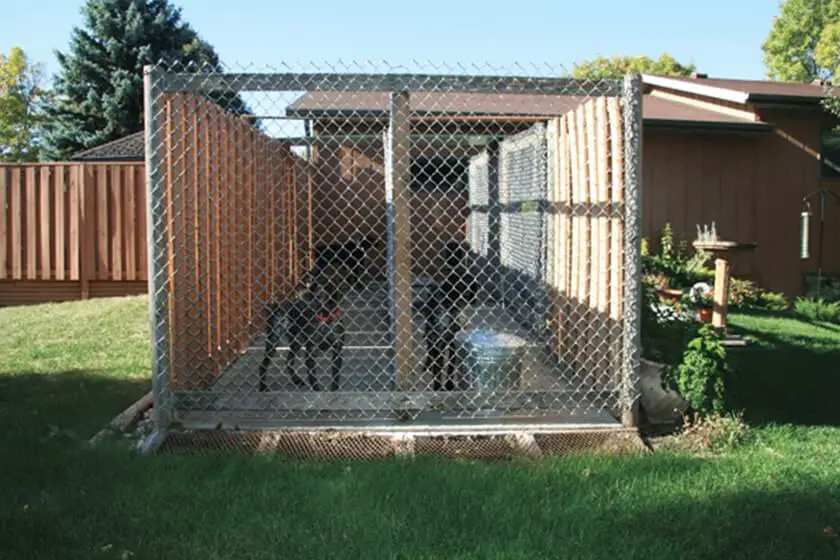
Metal dog fences offer a unique blend of durability and style. While they can be constructed entirely from metal or incorporate accent materials, their standout feature lies in their ruggedness. A prime example is the combination fence that pairs pallet walls with metallic middles. This design provides a uniform aesthetic while ensuring canine safety through sealed gaps. Additionally, it adds an industrial touch to the perimeter.
Furthermore, metal wire fences can be built using sturdy metal or wooden poles as frames, effectively combining a dog fence, kernel, and run into one cohesive structure.
No dig dog fence ideas
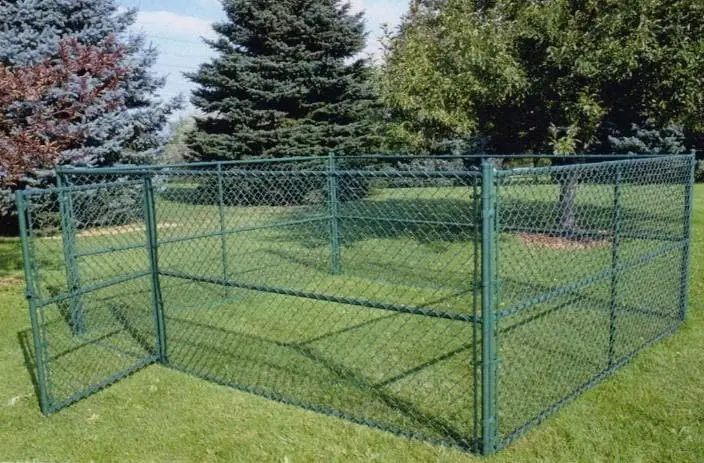
This type of fencing typically features stakes that can be easily pushed into the soil, eliminating the need for extensive digging. The materials used are diverse, including wood, vinyl, and metal, with most options being pre-fabricated and ready to install. A portable metal enclosure fence is a great example of this style, allowing you to assemble it and place it in your desired location within the yard.
For a more stylish and classic approach, consider vinyl picket fences that are not only visually appealing but also sturdy enough to keep dogs contained. By letting your turf grass serve as a natural cushion for your furry friends, you can create a safe and comfortable outdoor space.
Flower bed fencing to keep dogs out
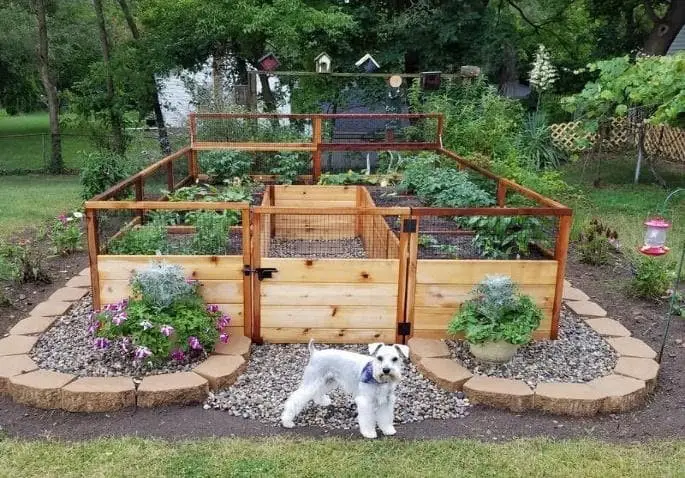
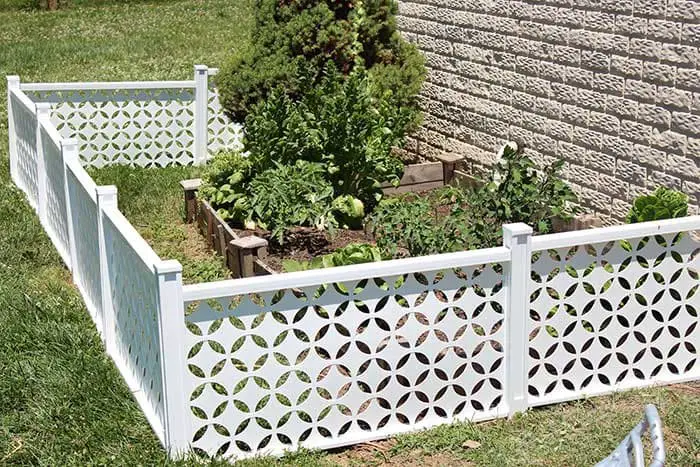
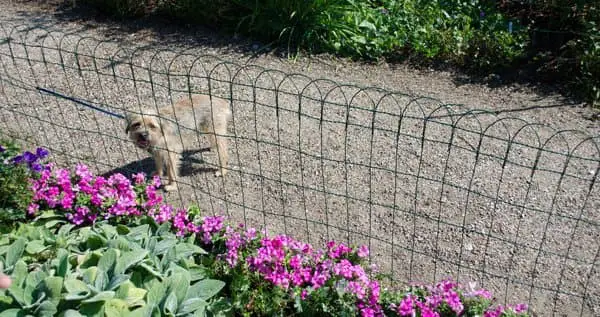
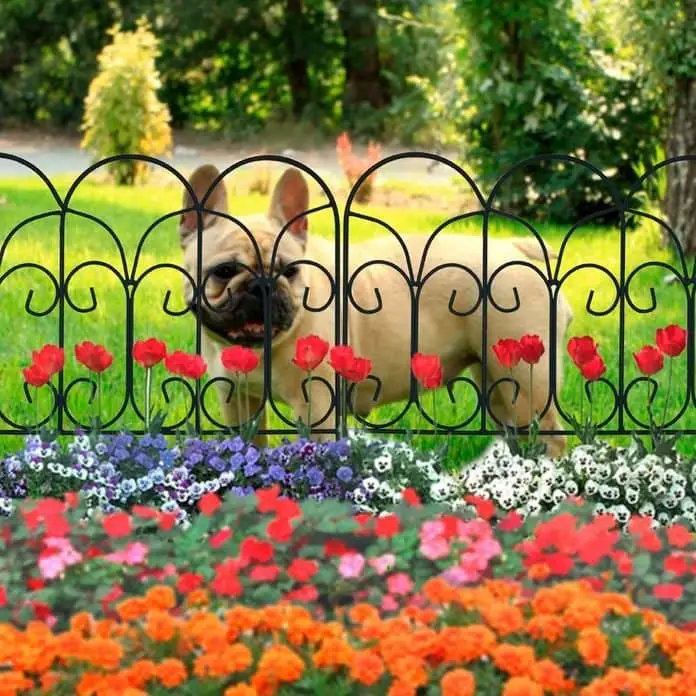
When it comes to keeping dogs at bay, planters and flower beds can serve as effective barriers in your yard. High-energy canine companions often have a knack for digging up or trampling plants, so defining boundaries through these structures is a great idea. Similarly, when you’re growing vegetables in your garden, it’s crucial to deter dogs from getting too close. One way to achieve this is by installing a sturdy, lockable enclosure made of wood and wire.
Not only will this barrier keep unwanted critters out, but it will also help protect your crops from damage.
In addition to these more substantial structures, you can also consider using lattice wood picket fences to create a visual deterrent for curious dogs. These fences offer the perfect balance between keeping dogs at bay and allowing them to satisfy their natural curiosity.
With gaps in between the slats, crawling critters can still get through, while larger animals are kept out by the fence’s height.
What to look for in fences for dogs
When selecting a dog fence, it’s crucial to consider several key factors. First and foremost, think about your dog’s jumping ability. Some breeds are naturally agile and can clear heights with ease, so ensure your fence is tall enough to contain them safely. A general rule of thumb is that any fence under 4ft is insufficient. Next, allocate sufficient space for openings, such as the central gate and gaps between enclosures.
This will allow your dogs to move freely without feeling constrained, especially if you have multiple canines. Additionally, consider including gaps for air circulation and visual stimulation, as these can be beneficial for dog well-being. Visual barriers are also important, as some dogs can become aggressive or anxious when they see strangers, other animals, or even their own reflection. A non-see-through fence can help mitigate this issue.
Finally, don’t forget to check local regulations regarding dog fences. Some housing associations may have specific requirements or restrictions, so be sure to comply with these rules to ensure your dog’s safety and the integrity of your yard. Ultimately, a well-designed dog fence will provide a secure and comfortable environment for your pets.
FAQs
When establishing a dog fence, there are several additional factors to take into account. To provide clarity, the following frequently asked questions (FAQs) outline key considerations to keep in mind.
What is the cheapest fence for dogs?
For dog owners with multiple furry friends, finding affordable yet effective fencing options can be a top priority. Fortunately, there’s a range of choices available that cater to different needs and preferences.
Some popular alternatives include PVC block netting, chain link and wire mesh, welded wire, poultry netting, and even repurposed wood pallet fencing.
How tall should my fence be for a dog?
When it comes to determining the ideal height for a dog fence, a general guideline suggests that 4 feet should suffice. However, this may not be sufficient to deter larger breeds like Labradors, Huskies, and Golden Retrievers from jumping over or trying to escape. As such, a minimum of 5-6 feet of fencing is often recommended. This taller height requirement can usually be met with the use of sturdy materials like wood, vinyl, or composite products.
What is the best fence for dogs?
When it comes to constructing fences for dogs, a priority is placed on using tried-and-true materials that can withstand the elements and provide a secure enclosure. Hardwood, vinyl, metal, and other robust materials are top choices due to their durability, ease of maintenance, and affordability. Furthermore, these options also contribute positively to a property’s exterior appearance, enhancing its curb appeal for potential buyers or neighbors.
What can I put on the bottom of the fence to keep the dogs in?
When considering a privacy fence, consider supplementing it with a barrier at the base to prevent canine escape artists from digging their way out of your yard. Options like chain link, chicken wire, or hardware cloth can be effectively incorporated into the design, either by burying them for visual harmony or leaving them exposed and placing them above planters, mulch, or gravel.
Do electric dog fences really work?
Despite their growing popularity, electric dog fences have garnered a mixed reputation. To provide a well-rounded perspective, let’s delve into both the advantages and disadvantages of these innovative devices. On one hand, they boast several appealing features: adaptability to varied yard topographies, affordability, ease of installation, and reliability in deterring common canine escapades like jumping over or crawling under the fence.
Additionally, they serve as a reliable barrier against unwanted intruders. However, it’s essential to acknowledge potential drawbacks, including the possibility of causing frustration and discomfort for dogs, as well as hazards posed to both canines and humans. Furthermore, their effectiveness may be compromised by inclement weather conditions.
At what age can a dog be trained for an invisible fence?
When it comes to training your furry friends for an invisible fence, timing is everything. In fact, experts agree that the optimal age for starting this process is around eight weeks old – a time when young puppies are still impressionable and more likely to absorb new information. Think of it as laying the groundwork for future success in their training journey.
Will the electric zap from the invisible fence kill my dog?
The electric fence’s voltage is carefully calibrated to provide a mild yet effective deterrent, rather than causing harm. The goal is to merely startle or correct the animals’ behavior, rather than inflict pain or injury. This gentle correction keeps them at bay without putting their well-being in jeopardy.
Are vinyl fences strong enough for dogs?
When it comes to fencing, vinyl is often a top choice – not just for containing dogs, but for various purposes. One significant advantage of vinyl over wood is its exceptional weather resistance. This means that regardless of the climate or weather conditions, vinyl fences will remain sturdy and functional. Additionally, many vinyl fence options come with no-dig alternatives, making installation easier than ever. Perhaps most impressively, however, is vinyl’s reputation as a durable material.
With its ability to withstand the weight and energetic activity of even the most rambunctious dog breeds, it’s clear why vinyl remains a popular choice for pet owners seeking a reliable and long-lasting fencing solution.
What other materials can I consider for dog fencing?
When it comes to dog fencing, many pet owners opt for the traditional options like wood, metal, and wire. However, there are several low-cost and viable alternatives that can provide effective containment without breaking the bank. These include bamboo fencing, corrugated metal panels, stone walls, hedging, vertical gardens, brushwood, retractable barriers, and super-sized planters. Each of these options offers a unique solution for keeping your furry friend safe and secure.
How can I keep my dog in the yard without a fence?
While some dog owners may not be enthusiastic about traditional fencing methods, there are alternative ways to keep your furry friends contained within your yard. One such approach is installing an invisible fence, which can provide a reliable and effective solution for keeping dogs in. Alternatively, you can rely on tried-and-true techniques like tie systems.
This involves using sturdy leashes, tethers or trollies to secure your dog to a specific location, allowing them to roam freely within a designated area. For added flexibility, consider investing in mobile anchors and rope, which enable your dog’s tether to slide along the perimeter of your yard. Another low-cost option is boundary training, which involves dedicating quality time to teach your dog where they can and cannot venture into your yard.
Finally, an exercise pen can provide a portable play area within your yard, giving your dog plenty of room to run around without getting bored.
Which states decree dog tethering as illegal?
While many states deem dog tethering as unlawful, they often have complementary local ordinances governing dog fencing. To ensure compliance with regulations, it’s essential to familiarize yourself with the specific states that enforce such rules.
In this context, several states stand out: Rhode Island, Hawaii, Texas, Michigan, Pennsylvania, and Indiana. It is crucial to understand the nuances of each state’s laws and regulations regarding dog tethering and fencing.
Are there dog breeds that are illegal to own?
While some US states have enacted laws restricting certain dog breeds, a notable example is found in Miami-Dade, Florida, where it is explicitly prohibited to own American pit bulls and terriers. Interestingly, this specific breed restriction is unique to this region, with no other known breed prohibitions existing elsewhere in the country.
What are the most behaved dog breeds?
Before investing in a dog fence, it’s essential to consider the breed of your furry friend. Some dogs can thrive with leash-only containment, while others may require more comprehensive fencing solutions. If you’re unsure which category your dog falls into, start by exploring breeds that typically don’t need perimeter fencing. For instance, Labrador Retrievers, Golden Retrievers, Australian Shepherds, Doberman Pinschers, Shetland Sheepdogs, and Collies are often content with leash management.
Poodles and Spaniels might also fit the bill. Keep in mind these breeds may still require some containment measures, but a fence might not be necessary.
Conclusion
In reality, dog fences serve as a must-have for our canine companions. By providing a dedicated space for exercise, playtime, and relaxation, these enclosures cater to their physical and emotional needs while also granting dog owners peace of mind. The freedom to let their dogs roam without worrying about escape or unwanted departures is priceless.
Fortunately, there are numerous dog fencing ideas to explore.
The key lies in striking a balance between the height, size, and convenience features that ensure a comfortable and enjoyable experience for your furry friends in the yard.
Related Posts
To successfully operate a farm business, selecting the right equipment is crucial. However, with numerous options available in the market, choosing the ideal tools can be overwhelming. Unlike choosing a driveway sealer, where tipping etiquette comes into play, picking out farming gear requires a more strategic approach.
In contrast to protecting your home by installing a fence, which involves physical barriers and security measures, selecting equipment for your farm business is about investing in the right machinery that will help you streamline processes, increase productivity, and ultimately boost your profits. The process of becoming a landscape architect or designer also requires careful consideration of various factors, including artistic vision, technical expertise, and commercial viability.
Similarly, becoming a garden photographer demands a deep understanding of lighting, composition, and storytelling. In essence, the key to making informed decisions in these fields is to gather relevant information, weigh your options carefully, and make choices that align with your goals, values, and circumstances.


